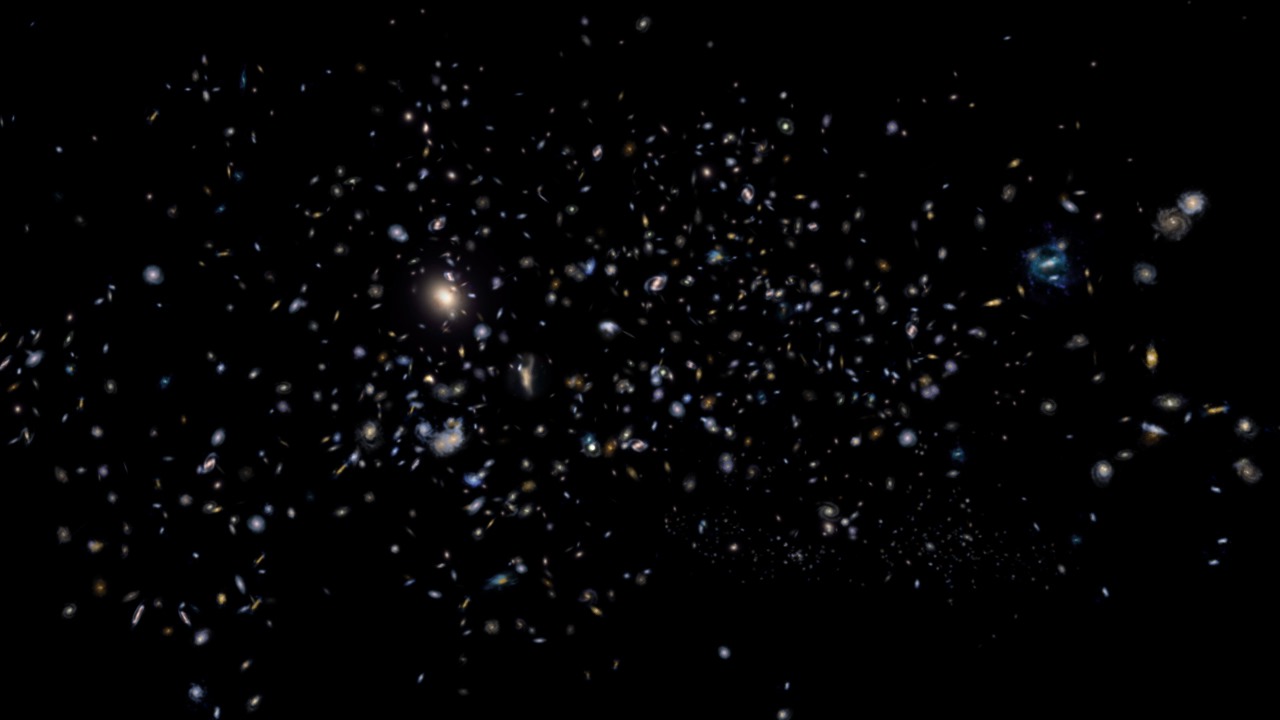Cosmic Clumps
When hot gas and millions of stars coalesce into galaxies, the gravity that glues these systems together may also recruit thousands of other galaxies to form one massive galaxy cluster. Stretching across millions of light-years and swarming with up to trillions of stars, galaxy clusters comprise the largest gravitationally bound objects in the known universe. Their sheer size and high composition of mysterious dark matter make them prized research subjects for astrophysicists. Using images of galaxy clusters from NASA’s Hubble Space Telescope, scientists have calculated that dark matter makes up approximately 23 percent of all matter and energy in space. These measurements impart clues into the ways dark matter may be driving the expansion of the universe after the Big Bang. Watch the video for a look inside a galaxy cluster.

Enormous groups of galaxies clue scientists in to the expansion of the universe.
How does it feel to fly through a galaxy cluster? Watch this animation to find out.

Galaxy cluster MACS J0717 is located about 5.4 billion light-years from Earth.

MACS J0025 was born when two galaxy clusters, each almost a million billion times the mass of the sun, collided and merged.

Abell 1689, which contains about a thousand galaxies and trillions of stars, is so enormous that it bends and warps the space around it.
Credits
Please give credit for this item to:
NASA's Scientific Visualization Studio
Cover image courtesy of NASA/CXC/M. Markevitch et al. and NASA/STScI/Magellan/University of Arizona/D. Clowe et al. and NASA/STScI/ESO/WFI/Magellan/University of Arizona/D. Clowe et al.
MACS J0717 image courtesy of NASA/ESA/University of Hawaii/LAM/Harald Ebeling and Jean-Paul Kneib
MACS J0025 image courtesy of NASA/CXC/Stanford/S. Allen and NASA/STScI/UCSB/M. Bradac
Abell 1689 image courtesy of NASA/ESA/STScI/AURA/Dominion Astrophysical Observatory/JHU/J. Blakeslee and H. Ford
-
Animator
- Dana Berry (Skyworks Digital)
-
Writer
- Julia Calderone (USRA)
Release date
This page was originally published on Tuesday, January 28, 2014.
This page was last updated on Wednesday, May 3, 2023 at 1:51 PM EDT.
